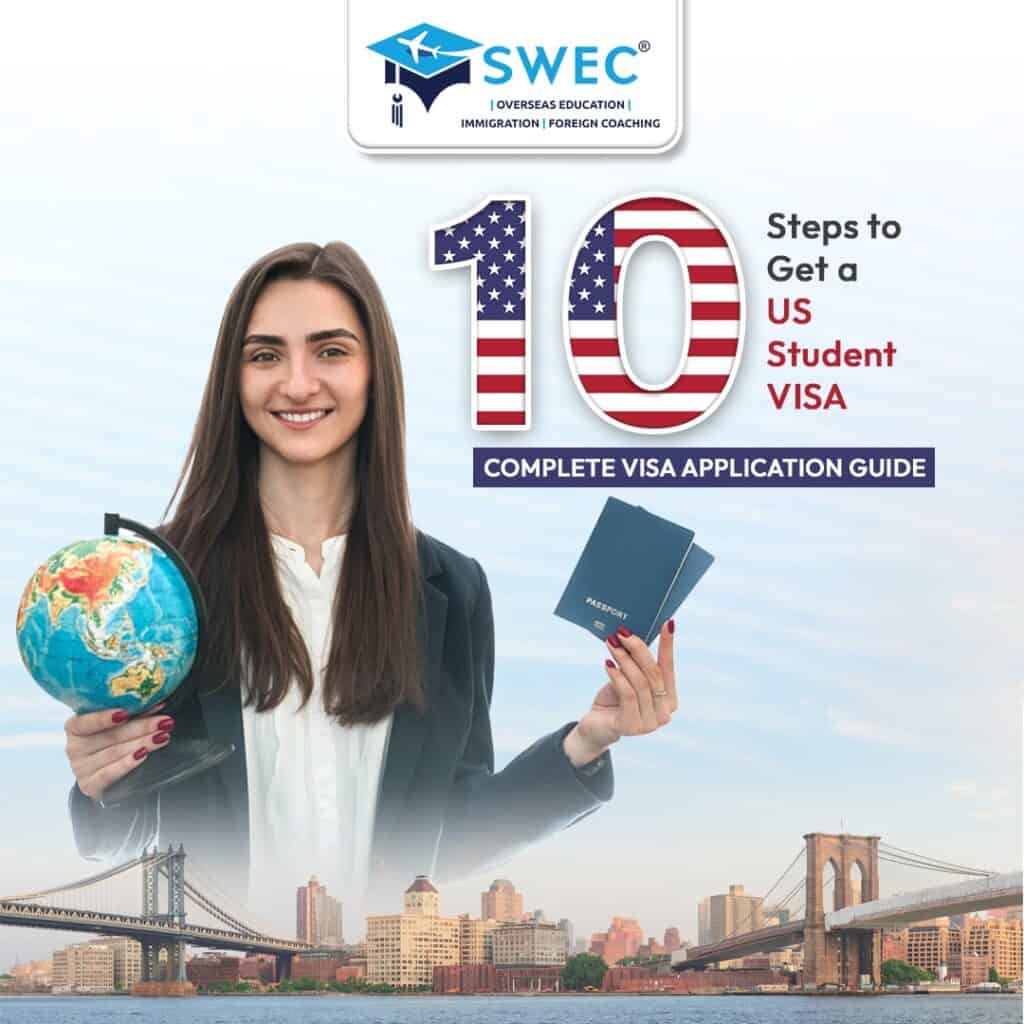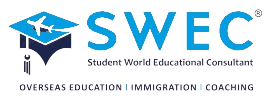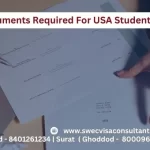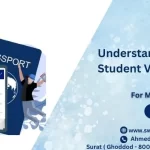
Several international students apply to US universities each year in order to pursue Study in the USA full-time. Yet you need more than just outstanding grades to go to school in the US; you also need a US student visa. Sadly, getting a visa can be a difficult procedure, which is why we\’re here to assist.
The fundamental type of US Student visa and how to obtain a student visa for the United States will be covered in this article. We\’ll also provide you with some advice and tools you can use to make sure your USA Study visa application process goes as smoothly as possible.
What Is a USA Student Visa? Do You Need One?
All international applicants, that is, those without US citizenship or permanent residency, must first acquire a US student visa in order to lawfully attend school in the US. This international student visa enables you to temporarily remain in the US while participating in an authorized academic exchange program, language program, or school.
After you finish your program, your student visa expires. You must depart the US at that point. (Unless you acquire an H1B1 Visa or have other visas that allow you to stay in the USA)
Types of USA Student Visa
There are three main types of USA study visas for international students:
- F-1 Visa: The F-1 visa is the most common type of student visa in the USA. It is designed for international students who wish to enroll in academic programs or English language programs at accredited US institutions, such as universities, colleges, and vocational schools. F-1 visa holders are allowed to work on-campus for up to 20 hours per week during the academic year and full-time during holidays and vacations.
- J-1 Visa: The J-1 visa is designed for students who wish to participate in exchange programs sponsored by the US government, educational institutions, or private organizations. These programs include study, research, and work-based programs that provide opportunities for cultural exchange. J-1 visa holders are also allowed to work on-campus for up to 20 hours per week during the academic year and full-time during holidays and vacations.
- M-1 Visa: The M-1 visa is designed for students who wish to enroll in non-academic or vocational programs at accredited US institutions. These programs include trade and technical schools that provide training in a specific trade or skill. M-1 visa holders are not allowed to work during their studies.
When Should You Apply For A US Student Visa?
You can start the visa application procedure as soon as you\’ve been admitted to the college or university you want to attend. Only after you\’ve applied to and been accepted by a school that has SEVP (Student Exchange and Visitor Program) approval can you submit an application for a student visa. SEVP program must certify any US institution that accepts F-1 or M-1 students.)
Keep in mind that you must obtain your visa prior to the start of your program. Although you can apply for a US student visa up to 120 days before the start of your program, you cannot enter the country on that visa until 30 days have passed since the start date.
US Student Visa Application Checklist
If you\’re applying for a US student visa to study in the United States, you will need to prepare a variety of documents to support your application. Below is a checklist of the most common documents required:
- Passport: A valid passport that is valid for at least six months beyond your intended stay in the US.
- Form DS-160: The Non-immigrant Visa Electronic Application (DS-160) is an online application form that must be completed and submitted.
- Visa application fee: The fee for a student visa is currently $160. This fee is non-refundable, and you must pay it before your interview.
- SEVIS fee: You must pay the SEVIS fee before you can apply for your visa. The fee is $350 for most students, but it may be less for some students.
- Acceptance letter: You must have an acceptance letter from an accredited US university or college.
- Form I-20: Once you have been accepted to a US school, the school will issue a Form I-20, which is the Certificate of Eligibility for Non-immigrant Student Status.
- Academic records: You must provide transcripts and certificates of your previous academic studies.
- Standardized test scores: You must provide scores for any standardized tests you have taken, such as the TOEFL or SAT.
- Financial documents: You must provide evidence that you can support yourself financially while studying in the US. This may include bank statements, sponsorship letters, or other financial documents.
- Photograph: You must provide a photograph that meets the US visa requirements.
- English language proficiency: You must demonstrate English language proficiency through standardized test scores or an interview.
How to Get a US Student Visa: 10-Step Guide
Step 1: Apply and Get Accepted to a US School for US Study Visa
The first step is to apply to (and ultimately be admitted to) a US university. Application deadlines for the majority of American full-time undergraduate and graduate programs are in December or January of each year. Around March and April is when schools normally send out their admission announcements.
The colleges you apply to must receive SEVP approval, as I already stated. Use the SEVP school search tool to identify a SEVP-approved school or to verify that the schools you\’ve selected are, in fact, SEVP-certified.
Most likely, J-1 students will submit exchange program applications through their home institutions. On the official J-1 visa website, you may also search for organisations that have been designated as sponsors.
Step 2: Have Your School Send You a Form I-20 or DS-2019
After being accepted into a program, you will either receive Form I-20 (Certificate of Eligibility for Nonimmigrant Student Status), which is given to F-1 and M-1 students, or Form DS-2019 (Certificate of Eligibility for Exchange Visitor (J-1) Status), which is given to J-1 students.
The appropriate form will be mailed to you by your school. Your SEVIS ID, the address of your institution, and other vital details about your program will all be on your document.
This form is required for your USA visa interview (we go into more detail about the interview process in step 8) and to pay specific expenses (which we discuss next in step 3).
Step 3: Pay the I-901 SEVIS Fee
Go online and pay the I-901 SEVIS fee as soon as your school sends you your I-20 or DS-2019 form. Again, the cost is 220 USD for J-1 students and 350 USD for F-1/M-1 students. (Those applying for a short-term J-1 visa will just need to pay USD 35.)
Most students can pay this charge online with a credit card, with the exception of those from Cameroon, Gambia, Ghana, Kenya, or Nigeria. Keep in mind that your visa application fee is separate from the I-901 SEVIS fee (which we explain more in step 7).
Print off your confirmation sheet after paying the cost because you\’ll need it for your visa interview.
Step 4: Locate a US Embassy or Consulate Near You
Your nearest US embassy or consulate is where you must submit an application for an international student visa (ideally, in the city or region in which you live). With the US Department of State, you can conduct an online search for US embassies and consulates.
Be advised that depending on the embassy you apply through, the procedures for obtaining a US student visa may vary slightly. This indicates that you might have to submit additional paperwork with your visa application at some embassies.
Visit your embassy\’s website or get in touch with them directly for further information on what you need to submit.
Step 5: Do the online Form DS-160 For US Student Visa
The Online Non-immigrant Visa Application, also known as Form DS-160, should then be finished.
Please ensure that you have the necessary materials on hand in order to complete this form:
- your ID card
- a visa picture (to upload)
- Whether you are an F-1/M-1 or J-1 student, the form you get will either be an I-20 or a DS-2019.
You might also need to provide:
- A trip schedule (if you have already planned to visit the US)
- The dates of your most recent five US visits, if any, and/or documentation of your recent international travel.
- a CV or resume
Step 6: Schedule Your Visa Interview
- Contact the closest US embassy or consulate (preferably the one you listed on your online application) after submitting Form DS-160 to set up your US Student visa interview.
- The length of the interview wait varies by embassy. To view the wait times for your embassy, visit the US Visas website.
Step 7: Pay Your Visa Application Fee
The 160 USD application fee must then be paid. No matter where you apply or where you are from, this charge is the same.
Be in mind that the exact timing of your payment will depend on your embassy. Not all embassies demand payment of the application fee prior to interviews, despite the fact that many do.
You should get instructions from your embassy on how and when to submit your visa application fee. Bring your receipt as proof of payment to your interview if your embassy requests that you pay this cost in advance.
Step 8: Attend Your Visa Interview
The interview is the last significant stage in obtaining a visa. Whether or not you are granted a student visa for the United States will depend on the results of this interview.
Assemble the following materials and data before your interview:
- Your ID card
- One duplicate of your visa photo (this may be required by certain embassies, particularly if you were unable to upload your visa photograph to your online visa application)
- Your DS-160 confirmation document, printed
- Your printed confirmation of the I-901 SEVIS charge
- Your receipt for paying the visa application fee (this is only required if you paid the application fee before your interview)
- For F-1/M-1 students, Form I-20, and for J-1 students, Form DS-2019 (bring the original, not a duplicate)
Your particular embassy may require additional forms and documentation, such as:
- Official transcripts from colleges/universities you’ve attended
- Diplomas/degrees from high schools/colleges/universities you\’ve attended
- Standardized test scores (if required by your US school)
- Proof of sufficient funds
- Proof of your intent to depart the US at the end of your program
You will undergo a security check and provide digital, ink-free fingerprints, usually right after you arrive at your interview.
Step 9: Pay the Visa Issuance Fee (If Required)
Some students must pay a visa issuance fee once they have been approved for a US student visa. Whether this fee is required or not depends on your nationality and your country’s reciprocity agreement with the US.
The US student visas website offers a chart you can use to see whether you must pay a visa issuance fee.
Step 10: Receive Your US Student Visa
Once you’ve completed all of the steps above and have received approval for an international student visa to the US, your embassy will return your passport to you with your new visa in it. Note that some embassies will require you to come in person to pick it up, whereas others will mail it directly back to you.





